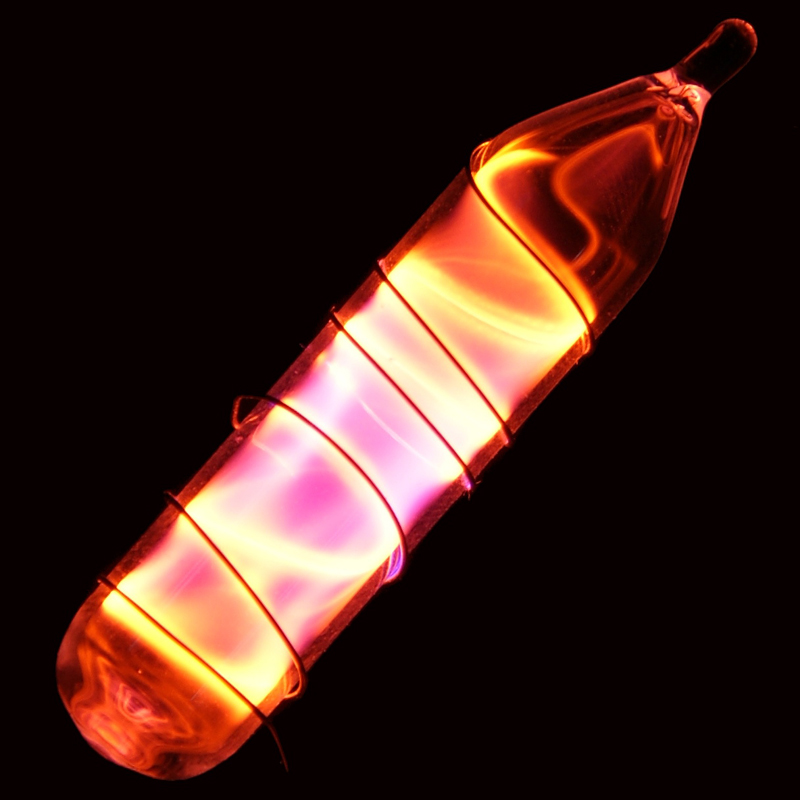Neó
10
Ne
Grup
18
Període
2
Bloc
p
Protons
Electrons
Neutrons
10
10
10
Propietats Generals
Nombre atòmic
10
Massa atòmica
20,1797
Nombre de massa
20
Categoria
Gasos nobles
Color
Incolor
Radioactiu
No
From the Greek word neos, new
Estructura cristal·lina
Cara cúbica centrada
Història
Neon was discovered in 1898 by the British chemists Sir William Ramsay and Morris W. Travers in London.
It was discovered when Ramsay chilled a sample of air until it became a liquid, then warmed the liquid and captured the gases as they boiled off.
After 1902, Georges Claude's company, Air Liquide, was producing industrial quantities of neon as a byproduct of his air liquefaction business.
It was discovered when Ramsay chilled a sample of air until it became a liquid, then warmed the liquid and captured the gases as they boiled off.
After 1902, Georges Claude's company, Air Liquide, was producing industrial quantities of neon as a byproduct of his air liquefaction business.
Electrons per capa
2, 8
Configuració electrònica
[He] 2s2 2p6
In a vacuum discharge tube, neon glows reddish orange
Propietats Físiques
Fase
Gasós
Densitat
0,0008999 g/cm3
Punt de fusió
24,56 K | -248,59 °C | -415,46 °F
Punt d'ebullició
27,07 K | -246,08 °C | -410,94 °F
Entalpia de fusió
0,34 kJ/mol
Entalpia de vaporització
1,75 kJ/mol
Capacitat tèrmica específica
1,03 J/g·K
Abundància a l'escorça terrestre
3×10-7%
Abundància a l'univers
0,13%

Número CAS
7440-01-9
Número CID de PubChem
23935
Propietats Atòmiques
Radi atòmic
38 pm
Radi covalent
58 pm
Electronegativitat
-
Potencial d'ionització
21,5645 eV
Volum atòmic
16,7 cm3/mol
Conductivitat tèrmica
0,000493 W/cm·K
Estats d'oxidació
0
Aplicacions
Neon is often used in brightly lit advertising signs.
It is also used in vacuum tubes, high-voltage indicators, lightning arrestors, wave meter tubes, television tubes, and helium-neon lasers.
Liquid neon is used as a cryogenic refrigerant.
It is also used in vacuum tubes, high-voltage indicators, lightning arrestors, wave meter tubes, television tubes, and helium-neon lasers.
Liquid neon is used as a cryogenic refrigerant.
Neon is not known to be toxic
Isòtops
Isòtops estables
20Ne, 21Ne, 22NeIsòtops inestables
16Ne, 17Ne, 18Ne, 19Ne, 23Ne, 24Ne, 25Ne, 26Ne, 27Ne, 28Ne, 29Ne, 30Ne, 31Ne, 32Ne, 33Ne, 34Ne